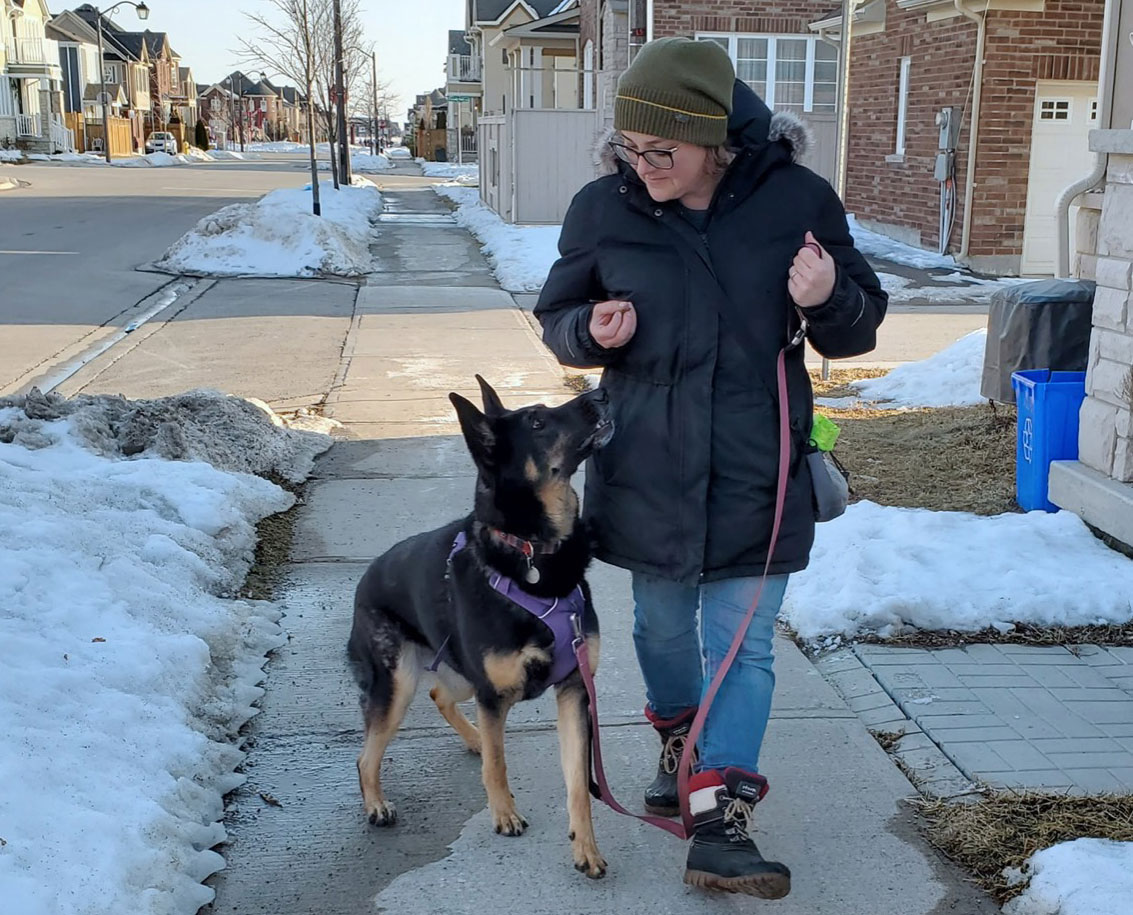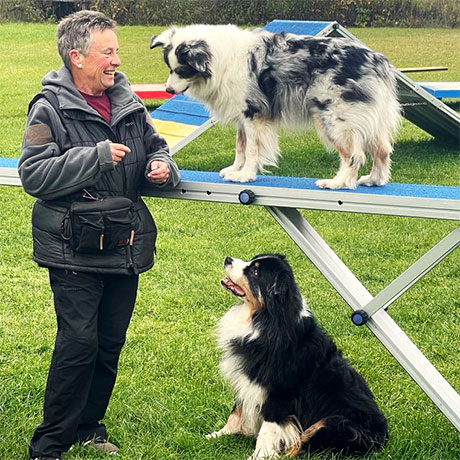Can I Walk My Leash Reactive Dog?
Yes, absolutely! Daily walks are an important part of the bond we share with our dogs. They give us a chance to connect, enjoy the outdoors, and explore the world together—a big part of why many of us have dogs in the first place. Reactive dogs and their owners deserve to enjoy this meaningful activity too.
Walking a leash-reactive dog is possible, but it does require some adjustments and proactive management confident on walks, making it a rewarding experience for both of you.

It’s Okay to Skip a Walk
First you need to let go of the idea that you have to walk your dog every single day. If your dog had a stressful experience on a previous walk or a visit to the groomer or vet, skipping a walk might actually be the best choice. Stress can linger in dogs, and giving them a day or two to decompress can help them de- stress.
Instead of walking play some fun training games at home. Scent games, or short training sessions can provide plenty of mental and physical stimulation while strengthening your bond with your dog. In fact, many dogs will thank you for giving them the chance to stay home and relax instead of facing potential stress outside.
Skipping a walk isn’t a failure—it’s a good decision to prioritize your dog’s mental and emotional health.
Choose Your Walk Times and Routes Before you Head Out
Try walking your dog during less busy times of the day, such as early in the morning or late in the evening. This reduces the likelihood of running into dogs, people, cyclists, or other potential.
Choose quieter routes when your neighbourhood is too busy. Neighbourhood parks or even industrial areas and parking lots might be good alternatives. Your dog can find interesting scents anywhere.
You might even consider driving to a place with more space. Open areas like forest trails, or quiet rural roads often provide a calmer environment. Getting out into nature can help lower stress levels for both you and your dog, so try to visit these areas at least once a week.
Select the Right Gear for Comfort and Safety
Using the right equipment can keep your walks safe and enjoyable for both you and your dog.
Consider using a front-clip harness or a head halter. These tools can give you better control over your dog’s movements (making your feel less stressed) and reduce pulling without causing them discomfort or pain.
Avoid using retractable leashes. They might seem convenient, but they can be awkward to manage when another dog unexpectedly appears.. Additionally, they can be dangerous for both humans and dogs. The thin cord can cause burns, cuts, or even serious injuries if it wraps around an arm or leg. . A 6-10 foot leash is a safer and more reliable option.
Leashes made of biothane, leather, or rubber are easier to grip and more durable than nylon. Nylon leashes can be painful if your dog pulls it through your hand making it harder to maintain control during tense moments. A sturdy, comfortable leash with a good grip helps ensure safety and comfort for both of you.
Select the Right Gear for Comfort and Safety
For many reactive dogs, walks can be stressful as they often predict the appearance of triggers. But with some creativity, you can turn walks into a fun and enriching experience for your dog.
Let your dog to take plenty of sniff breaks during the walk, especially in quieter areas. Sniffing provides mental stimulation, reduces stress, and helps your dog decompress.
Introduce simple games like “Find It” by tossing treats into the grass or along the path for your dog to sniff out. Not only does this provide mental engagement, but it can also redirect their focus away from potential triggers.
Practice games that build engagement and redirect your dog’s attention to you when needed.
Always carry your dog’s favorite treats or a special toy to make walks more rewarding. Positive reinforcement encourages your dog to engage with you and helps them associate good things with being out in the world.
Each positive experience on a walk helps build your dog’s confidence, making future walks more enjoyable. Take things one step at a time, and don’t forget to celebrate your successes, no matter how small. Happy walking!
